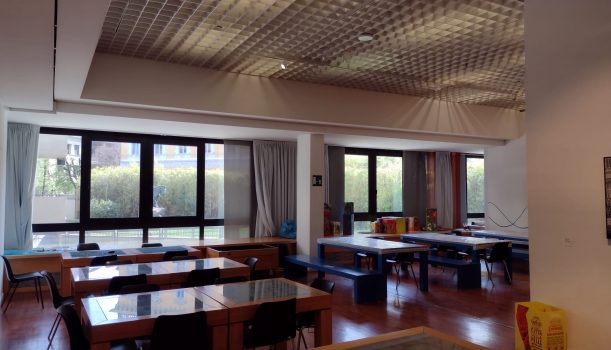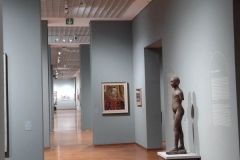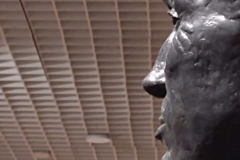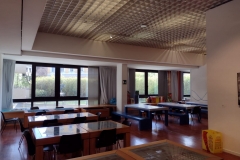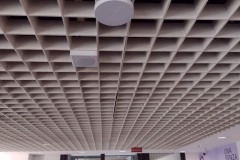At the beginning of April, the deployment of the 5G network solution at GAM (Galleria d’Arte Moderna e Contemporanea) has been finally concluded. This important milestone is the result of the joint effort of TIM and Ericsson, with the collaboration of Fondazione Torino Musei and the supervision of the Superintendency of Fine Arts. Together with the 5G network solution at Palazzo Madama, the GAM solution concludes the 5G-TOURS ad-hoc commercial network extension to provide the 5G indoor coverage in the two museums of the Turin site.
The 5G solution implemented at GAM has been designed to satisfy the requirements coming from UC1“Gamification, let’s play artist” developed by Samsung, UC2 for the “Treasure hunt” through a telepresence robot provided by TIM and UC3 “Robot-assisted Museum guide” implemented by IIT. These use cases have driven the network performances requirements in terms of latencies less than 20 ms and, especially for UC3, with uplink throughput above 50 Mbs.
The implementation of the 5G indoor coverage at GAM is provided by an infrastructure that is complementary to the one deployed for Palazzo Madama. The two infrastructures share the same Ericsson baseband node and are then both connected to the TIM on-field CN (Core Network). From the architectural point of view, the solution is still based on the Option 3 NSA (Non-standalone) defined by 3GPP; based on this approach the 5G network implementation leverages on the existing outdoor LTE network that allows a smooth migration from 4G to 5G coverages in the indoor context of the museum.
The 5G indoor coverage at GAM has been implemented using the Ericsson 5G DOT radio access system consisting of different irradiation points (i.e. DOTs) connected to an IRU (Indoor Radio Unit) that allowed a capillary coverage of the museum at the ground floor (in the hall closed to the ticket office and in the spaces of the educational department), and at first floor to cover all the permanent exhibition along its corridors and rooms. The use of the DOTs enabled a flexible installation and positioning within the GAM museum allowing to meet also the Superintendency requirements in terms of visual-impact for the visitors; the size, the color and the positioning of the DOT antennas have been considered as key constraints from Superintendency officer involved since the first phase of the network solution definition and design.
Preliminary measurements allowed to characterize the network performances, reaching up to 900 Mbps on the downlink, 80 Mbps on the uplink and very low latencies in the order of few milliseconds. UCs’ tests and trials activities at GAM have just started and will soon allow to demonstrate the applications that have been developed and collect the related KPI that will be used for the final validation activity of 5G-TOURS.


